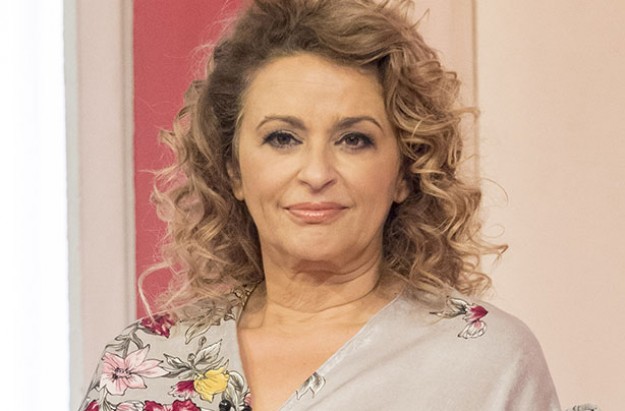Why Can't We Figure Out Menopause?
There are a few things science doesn’t know about the menopause: what it’s for, how it works and how best to treat it. Approaching her second — yes, second — menopause, Rose George finds herself with more questions than answers.
My physio, a young woman called Lucy, was simply making conversation. She wanted to distract me from the serious discomfort she was about to inflict by massaging the nerves around my painful posterior tibial tendon, an ankle injury I assumed I had brought on by running too much. “My mother’s post tib has ruptured,” she said. “It’s really common in menopausal women.” This definitely worked as a distraction. What did all this have to do with the menopause, I asked? She looked surprised, because to her the answer was obvious: “Collagen.”
Suddenly something clicked, and not just in my ankle. For about a year, the skin on my hands had been peeling, monthly. I’d seen GPs and pharmacists and been given various remedies, from “try thick hand cream” to “drink more water”. Lucy’s comment made me research more: estrogen is related to collagen production, and when estrogen levels start to change in women who are in the stage approaching the menopause (the so-called perimenopause), all sorts can happen.
A few things science doesn’t know about the menopause: what it’s for, how it works and how best to treat it.
Perhaps I should have known this. I’ve already had one menopause. It was chemically induced as a treatment for my endometriosis, a condition where the cells that line the inside of the uterus (the endometrium) grow elsewhere in the body. I was given a course of injections of leuprorelin, a drug that blocks the production of estrogen. Leuprorelin is not fussy: it can block testosterone in men and estrogen in women, hence it’s used to treat prostate cancer and chemically castrate pedophiles, as well as to calm down inflamed female pelvises.
“You may have some vasomotor symptoms,” said my consultant, adding that the whole thing wouldn’t last more than six months. He was right about the first and wrong about the second. ‘Vasomotor’ refers to the constriction or dilation of blood vessels. In the case of the menopause, the results are hot flushes and night sweats. I remember sitting at posh dinners, pouring sweat and being thankful my dress was black. I carried a fan and deodorant at all times. I stank. My moods sank to alarming depths. I stopped sleeping.
I longed for it to stop. It did, once I finally went on hormone replacement therapy (HRT). I’m now ‘naturally’ in the perimenopause, the stage before the menopause that can last several years. But even though I’m postmenopausal and perimenopausal all at once, Lucy’s comment made me realize that I still knew too little about hormones and the menopause. And in this, I was completely normal.
A few things science doesn’t know about the menopause: what it’s for, how it works and how best to treat it.
As a comprehensive review in Nature put it, “the functional lifespan of human ovaries is determined by a complex and yet largely unidentified set of genetic, hormonal and environmental factors”. Also poorly understood is what happens when the ovaries begin to fail and hormone levels begin to fluctuate.
Perhaps we should be sympathetic to this ignorance. The menopause doesn’t make much sense, biologically or intellectually. Humans are one of only three animal groups that we know of to experience it (the others are killer whales and short-finned pilot whales). As one recent book on primate ecology puts it: “Menopause is still considered a distinctly human trait.” That we live so far beyond our reproductive usefulness is a puzzle that was answered, supposedly, by the ‘grandmother hypothesis’. By this reasoning, human females live beyond their reproductive years because their presence benefits their children and grandchildren. One aspect of this relates to the fact that humans are no longer well-designed to give birth, because walking upright and having a large brain has led to a pelvis size which makes giving birth standing up or without help extremely difficult. Older females, then, can be useful even when they are not producing offspring.
This idea was questioned by the ecologist and biologist Craig Packer, though by studying lions and baboons, not women. He found that the presence of post-reproductive females gave the animals no particular advantage: young lions and baboons with grandmothers fared as well as ones without. Another theory, that the menopause is a product of our longer modern lifespans (that we died so young, it didn’t have chance to exist), is easily skewered. There are plenty of accounts of women living to a good age throughout history. The concept of the menopause, though, is modern: the phrase was invented in 1821, but it was only in the 20th century that the concept became dogma.
At least medical definitions seem clear on what the menopause is: a biological stage in a woman’s life marked by the cessation of periods because of a reduction in the function of the ovaries. This seemingly straightforward statement conceals vast and mysterious depths. A female human is born with over a million eggs in her ovaries. Every month, she releases one, a process triggered by the release of hormones, including estrogen. After the age of 40, the ovaries begin to secrete less estrogen, and, in the wonderful understatement of the charity Women’s Health Concern, this causes “the body to behave differently”.




Comments
Post a Comment